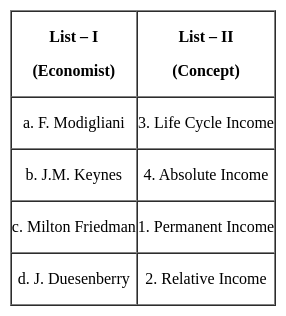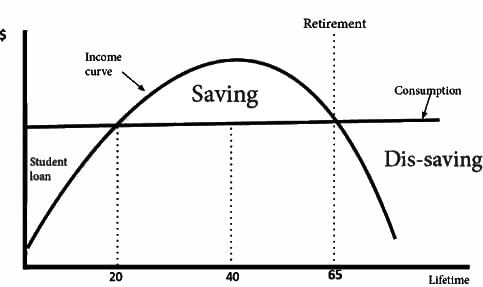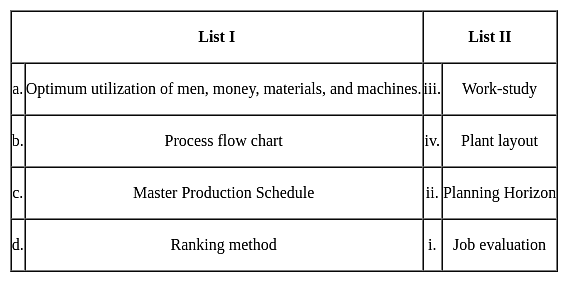APSET Paper 2 Mock Test - 4 (Commerce) - AP TET MCQ
30 Questions MCQ Test - APSET Paper 2 Mock Test - 4 (Commerce)
Under which of the following conditions can a proposal be revoked according to the Indian Contract Act 1872?
A. By the communication of notice of revocation by the proposer to the other party
B. By the failure of the acceptor to fulfil a condition of proposal
C. By the death or insanity of the proposer
D. By the lapse of the time prescribed
E. By notice of revocation after the acceptance is communicated.
Which of the following theories says that "to export was good and to be encouraged but to import was bad and to be discouraged"?
| 1 Crore+ students have signed up on EduRev. Have you? Download the App |
Chi square test' measures which of the following?
Match the items of List - I with the items of List - II.
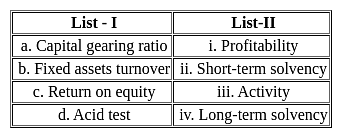
Cost accounting information can be used for:
Given below are two statements: One is labelled as Assertion A and the other is labelled as Reason R.
Assertion (A): Median is the middle most item in the set of numbers.
Reasons (R): Mode is not unduly affected by extreme values.
In the light of the above statements, choose the most appropriate answer from the options given below:
Which of the following is not a function of Reserve Bank of India?
Match the Economists in List – I with the Concepts in List – II :
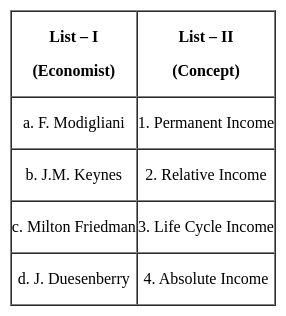
Identify which is not a diversifiable risk factor
Direction: Given below are two statements, one labeled as Assertion (A) and the other labeled as Reason (R). Choose which of the following alternatives is correct?
Assertion: Game theory provides an opportunity to analyze the oligopolistic firms.
Reasoning: Game theory is the study of how people behave in strategic situations.
The stock market theory which states that stocks are in equilibrium and impossible for investors to beat the market is classified as an:
The Carl Pearson and Epso's coefficient correlation measures the ______ between the X and Y variables.
Which of the following labour laws are related to working hours, conditions of services and employment ?
A. The Payment of Wages Act, 1936.
B. The Trade Union Act, 1926.
C. The Factories Act, 1948.
D. The Mines Act, 1952.
Choose the most appropriate answer from the options given below:
Who coined the expression “Marketing Mix” ?
Match List-I with List-II
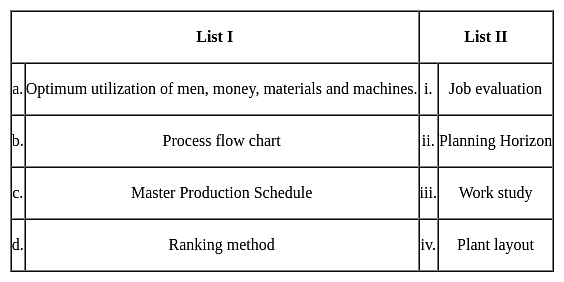
Choose the correct code:
For regulation of the Insurance Trade in the country the Government has formed:
In which Section of Income Tax Act, exempted incomes have been mentioned ?
Which of the following is not a method of forecasting demand?
With the help of Ogive curve, we can estimate:
With reference to working of stock exchanges in India, consider the following statements :
(I) The stock exchange is an organization that interferes between a company and an investor to raise funds for the benefit of the company as well as an investor.
(II) In India, the most prominent stock exchanges are the Bombay Stock Exchange (BSE) and National Stock Exchange (NSE).
(III) BSE is the oldest stock exchange in Asia established in 1875.
(IV) Sensex is an index for NSE.
Which of the following statements are correct?
AS - 6 was made mandatory from the accounting period beginning on or after:




